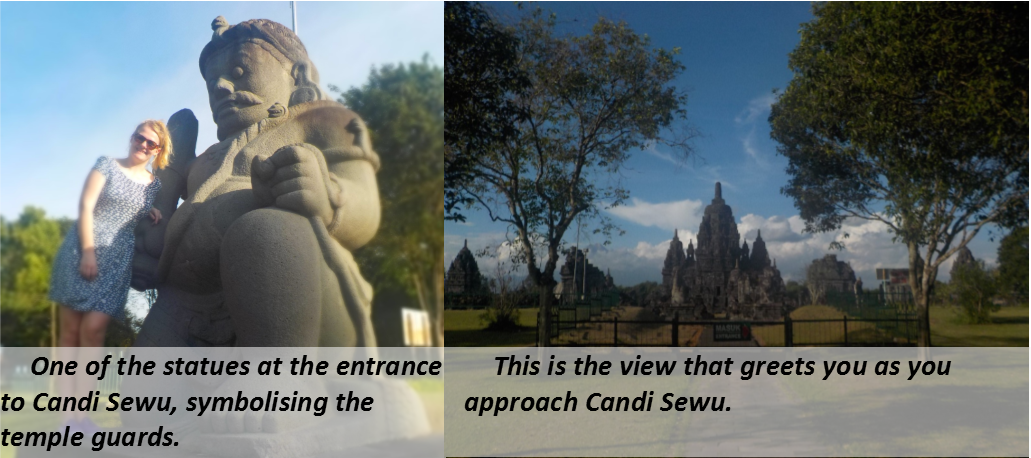Our first foray into the Sumatran rainforest consisted of a crash course in jungle fieldwork with our supervisors,
Mandy and Ross. Their knowledge and experience has proved invaluable as myself
and Rosanna try to get our heads around the forest and our methods. It turned
out to be a pretty productive few days, as well as a great adventure!
There is an elephant patrol camp (complete with real live
elephants) located just outside the Gunung Leuser National Park, with a patch
of forest which is not covered by the park area. We used this area to try out
the methods which we have been talking about in theory for so many months. The
camp itself does not have very good access by road, so the last part of our
journey was actually made by boat. Personally, I think this was a pretty
awesome way to enter the forest, as you can sit back and really enjoy the view.
We were all playing ‘spot the wildlife’ and spent the journey shouting out any
animals we could see. ‘GOAT!’ was the most common find, but we also caught a
monitor lizard basking on the river bank, and a couple of macaques up in the
trees. The end of our journey was signalled by the sight of an elephant’s bum,
and we disembarked along with all of our gear and went to check out our
five-star lodgings (we had real mattresses and everything!).
On our first full day we were up bright and early at 5.30am.
Our first order of business was to practise measuring transects. As it turns
out, walking 500m in a straight line through dense rainforest is much easier
said than done! We found ourselves having to clamber through bushes, ant’s
nests and around large tree trunks. By the time we were done, we were all
incredibly sweaty and covered in insect bites. I looked down at my boot to find
my sock soaked in blood, and a leech happily munching on my foot (the first of
what I’m sure will be many). This is the glamourous reality of fieldwork! Next
up, we practice measuring some trees. This prompted a very long discussion
about the best way to count branches (it’s more complicated than you might
think!), but eventually we come to an agreement, and by our fifth tree we’re
whizzing through the data collection.
The following morning, we head out at 5am to have a listen
out for Gibbons, Siamangs and Thomas Langurs. The langurs were already awake
and calling as we entered the forest, almost as if they were saying hello! Male
Thomas langurs will call in the morning as a way of reinforcing their
territorial boundaries and to assert their dominance over other groups. The gibbons
seem to be a little lazier, and we don’t hear anything from them for a couple
of hours. Eventually, though, at about 7.30am we can hear a pair calling to
each other in the distance. When gibbons sing, the female will start off, going
into her great call, after this, the male will answer, and the pair will
continue in this way for several minutes. This duet strengthens the pair’s bond
and highlights their territory to other animals. As we listen, we also hear a fainter echo to
the female’s great call. This is known as a double great call, and the fainter
echo is actually a young female, who is learning to call by copying her mother.
I’m really looking forward to our vocal surveys now. I can’t think if a better
way to spend our mornings than waking up to the sound of gibbon song.
One morning, as we return from our listening session, we
find an elephant grazing on the grass right outside our camp, along with one of
the national park staff. She was being taken down to the river for her bath,
and had just stopped for a snack. Her trainer was very keen for us to take
photos! At one point, her face was just inches from mine, and I found myself
captivated by her beautiful eyes. I have to admit that meeting one of them up
close was pretty magical.
The real highlight of the trip, however, would have to be
our first orang-utan sighting! Whilst we were wandering around in the forest,
we stumbled upon some of the Sikundur staff, who were following a couple of
orang-utans nearby. They asked us if we would want to go and have a look, to
which our reply was obviously yes! It took us a while, but after a mad dash
through the forest (best get used to this!) and a bit of searching in the
canopy, we were all staring up at a young male feeding right above us. He also
seemed to enjoy watching us, and we could frequently see him peering down at us
through the canopy. I got leeched again while we watched him, but it was
totally worth it.
We had a lot of fun during our first few days in the jungle,
but unfortunately it all ended too soon, and it was time to return to Medan.
Next time we head to the forest we’ll be on our way to the Sikundur research
station, and we won’t be returning for several months!









